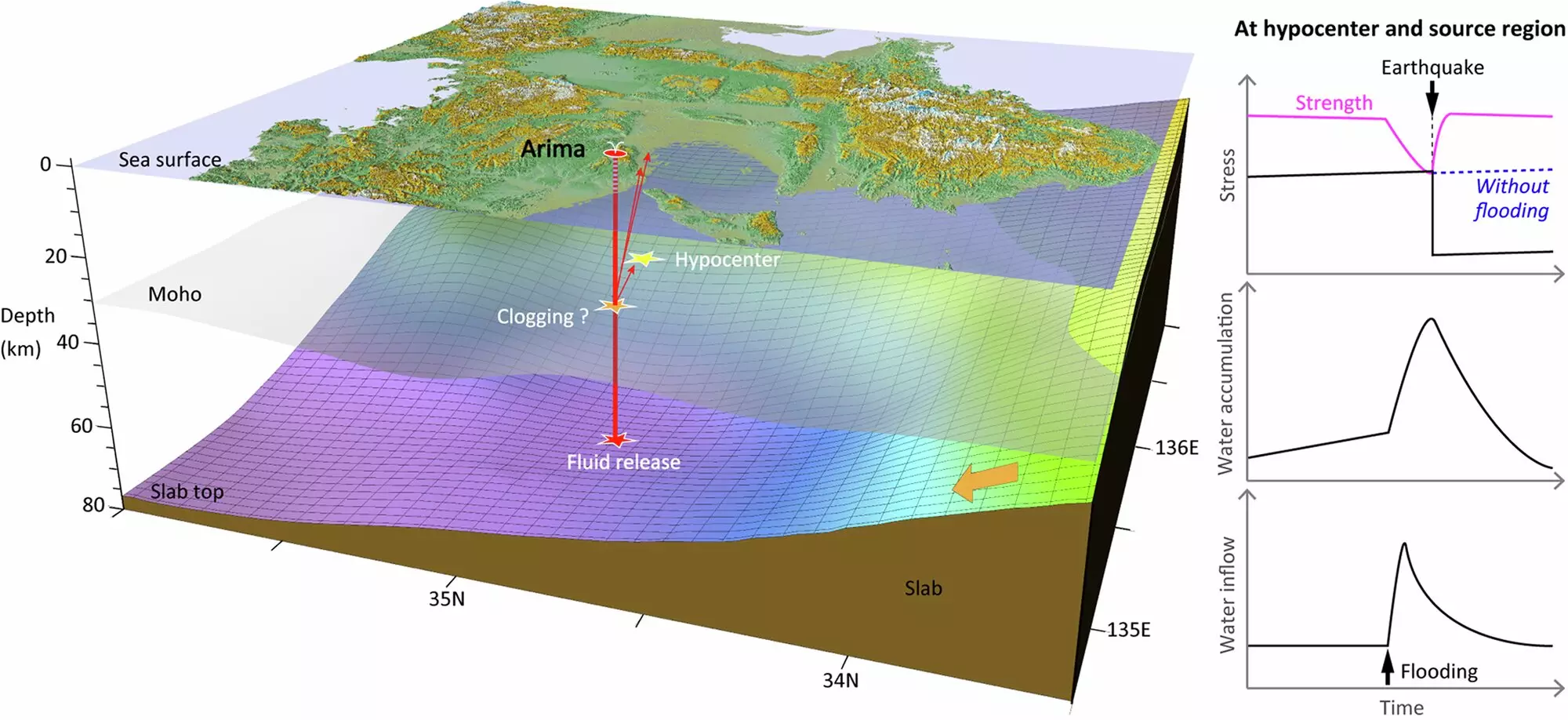Understanding the intricate relationship between geological processes and seismic events is a complex endeavor that often reveals surprising connections. A recent study by researchers from the University of Tsukuba shines a spotlight on the 1995 Kobe earthquake, suggesting that deep underground flooding beneath Arima Hot Springs may have played a pivotal role in triggering this catastrophic event. This groundbreaking research emphasizes the need to investigate hydrogeological factors when assessing earthquake risks, particularly in regions with prominent geothermal activity.
The researchers utilized stable isotope analyses, examining the ratios of hydrogen and oxygen, alongside chloride ion concentrations in Arima’s thermal waters over a span of several decades. What they discovered was not only intriguing but also confirmed the hypothesis that the seismic activity of 1995 could link back to water from the subducting Philippine Sea Plate. Previous knowledge indicated that hot springs often contain water sourced from deep within the Earth’s crust, making isotopic studies a powerful tool for tracing such origins. The Arima Hot Springs, local to Kobe, exhibit striking salinity levels, more than double that of seawater, leaning strongly towards an underground connection with the Philippine Sea Plate.
However, while isotopic signals hinted at considerable geological connections, direct evidence remained elusive until now. The culmination of this historic analysis, published in *Communications Earth & Environment*, uncovered a significant find: the isotopic ratios of water believed to be derived from the tectonic plate matched predictions made by a numerical model. The historical context of groundwater analysis reveals an intriguing pattern: the proportion of water linked to the tectonic plate showed a notable decline following the introduction of deep well drilling in the 1940s. Curiously, a spike in this plate-derived water occurred in the lead-up to the Kobe earthquake, reflecting a potential engagement with seismic activity.
Groundwater Behavior as a Seismic Indicator
This phenomenon was particularly pronounced in three out of seven studied springs. The increase in isotopic concentration was further correlated with elevated levels of chloride ions and radon in local groundwater—markers that are often recognized as precursors to seismic events. The estimated volume of this plate-sourced water reaching over 100,000 cubic meters raises questions about the ability of this influx to influence fault weaknesses, potentially precipitating the earthquake.
The implications of these findings extend beyond the 1995 disaster and into other seismic regions such as Matsushiro, where a similar behavior pattern was observed during the earthquake swarm of 1965-67. This suggests that the fundamental interactions between geological subsystems and their hydrology are vital components for understanding seismic risks. Researchers advocate for enhanced monitoring of thermal water systems as an innovative approach to earthquake prediction. By unraveling these complex interactions, scientists can develop more effective strategies to anticipate and mitigate earthquake risks in vulnerable areas, opening new avenues for geological and environmental research.


Leave a Reply